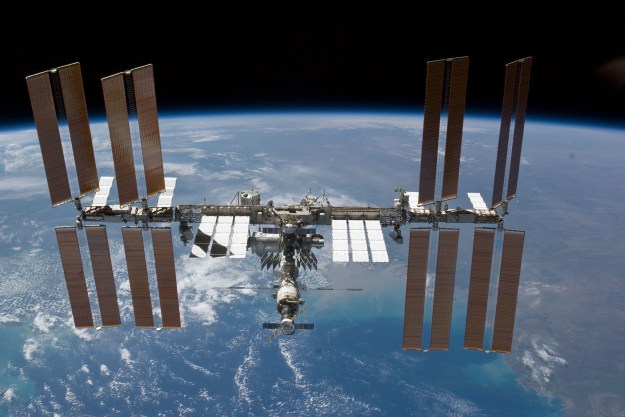The International Space Station (ISS) is preparing to take delivery of the European Robotic Arm (ERA) later this week.
The 11-meter-long robot launched on a Russian Proton rocket from the Baikonur Cosmodrome in Kazakhstan on July 21, and is scheduled to dock with the ISS on Thursday.
Due to its large size, the ERA was folded into a more compact shape prior to loading, and then attached to what will be its home base at the ISS — the new Multipurpose Laboratory Module, also called Nauka.
The space station is already home to two robotic arms — from Canada and Japan. While extremely useful for docking procedures and assisting astronauts on spacewalks, neither of these arms can reach the Russian segment of the orbiting outpost. But the ERA will be able to do just that.
According to the European Space Agency (ESA), the new robotic arm will also be the first with the ability to “walk” around the outside of the ISS by moving hand-over-hand between fixed base-points.
“Moving hand-over-hand around the Russian parts of the station, the ERA will bring more freedom, more flexibility, and more skills to space operations,” said David Parker, ESA director of human and robotic exploration.
It’ll also be the first robotic arm at the ISS that’s able to be controlled by crew members both inside and outside the station.
The robot’s main tasks will be to handle experiment payloads and other components, transport spacewalkers between locations outside the station “like a cherry-picker crane,” and carry out inspection work of the station’s exterior using its four built-in cameras. During its activities, the ERA will be able to handle components weighing up to 8,000kg with an impressive 5mm precision.
First, though, the ERA needs to be set up. Current ISS astronaut Thomas Pesquet will help prepare the robot for installation, with incoming astronauts Matthias Maurer and Samantha Cristoforetti conducting the first of five spacewalks to fully deploy the device.
The ERA is the work of a consortium of 22 European companies from seven countries. It was actually designed more than three decades ago and was supposed to head to the ISS long before now, but technical issues kept it grounded for longer than expected.
Editors' Recommendations
- Qualcomm just made some bold claims about gaming on ARM PCs
- How to watch Crew-8 arrive at the space station tonight
- Watch this astronaut’s ‘space waltz’ on the ISS
- Russian cosmonaut breaks record for time spent in space
- SpaceX needs good weather for Wednesday’s crewed launch. Here’s the forecast


